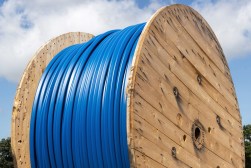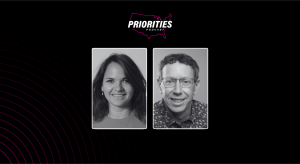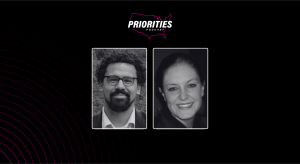
Which states are the best connected is not a question Google can answer. There’s a lot of data available, but everyone interprets it differently and everyone has their own criteria for what connectivity means. Even more commonly, there are no interpretations at all, but simply spreadsheets — just rows and rows of dizzying data.
Some states have a government-led office to head broadband development, some have just a single person, others have no office at all. State leadership can provide a link between the student sitting at his desk and the millions in federal funding that could build new infrastructure to turn on that student’s internet connection. And state programs can build community outreach and research their communities to understand how they can serve them most effectively.
Data taken from the FCC 2016 Broadband Progress report shows how well states provide broadband access to their populations. Small states top this list. Connecticut, Hawaii, Delaware, Maryland, Rhode Island and New Jersey all theoretically reach at least 96 percent of their populations with their networks. New York is the largest state in this group, providing access to 98 percent of its population.
The map below, which contains the FCC access statistics for all 50 states, provides one answer to the question of who’s connected best, but not an entirely satisfactory one.
This data doesn’t tell the whole story. Just because service is available doesn’t mean people are using it or even that they can afford it. The data also doesn’t account for levels of competition in the market or the rapid and steady march that is technological advance.
According to IBM, the world creates 2.5 quintillion bytes of data every day — that’s enough to stream “Cool as Ice,” the 1991 feature film starring Vanilla Ice, 600 billion times in high definition.
Even more telling, IBM says 90 percent of all data has been created within the past two years. If such a rate of growth continues, bigger pipes will be needed to move it all, notwithstanding FCC Commissioner Mike O’Rielly’s contention that ultra-fast broadband is “a novelty.”
A more holistic state-level analysis provided by the Strategic Networks Group (SNG) takes survey data from 48 of 50 states — New Jersey and Utah did not participate — that uses five weighted metrics:
- Broadband availability (27.5 percent)
- Broadband adoption (12.5 percent)
- Training, education and support programs provided by the state (15 percent)
- Continued investment and sustainable funding mechanisms (30 percent)
- Regulatory environment (15 percent)
Researchers found an average overall state score of 58.8 percent, and Maine topped the list at 87.7, overtaking New York and Ohio since previous versions of the survey. The group attributed Maine’s edge to training and education programs for citizens, businesses and organizations that are driving “meaningful use” of the state’s high levels of connectivity.
SNG’s research is compelling for its attention to detail. An issue so complex should not rely on a single metric if any reasonable determination is to be made. But some of SNG’s findings are hard to reconcile with the label “most connected.” Maine may have the most well-rounded broadband program, but it’s not the most connected state by any measure.
BroadbandNow, a search tool that combines hundreds of millions of rows of government data, provides yet another perspective. States ranked highly by the Strategic Networks Group like Maine and Ohio — No. 1 and No. 2, respectively — are ranked only No. 24 and No. 27 by Broadband Now. StateScoop’s list is the intersection of these two ranking systems — states that have high levels of connectivity, but ones that also run programs and create regulations that may foster connectivity in the decades to come.
All of the states selected for this list allocate resources and lead programs dedicated to helping rural regions gain connectivity. And all states selected, except Oregon, operate a broadband office.

New York
With service coverage to 98 percent of residents and 167 service providers, the state fares well by today’s statistical measurements. ButNew Yorks programs and policies telegraph an even brighter broadband future. Educational programs assist small businesses in harnessing broadband opportunities. And through Gov. Andrew CuomosNew NYprogram, the state is investing $500 million to equip every New Yorker with broadband by 2018 more than all the other states on this list combined.By engaging regional economic development councils, the state will identify and prioritize underserved communities, libraries and educational opportunity centers to ensure the goal of universal access is soon achieved.

Connecticut
With 99 percent population coverage, Broadband Now lists Connecticut as thesecond-most-connectedstate in the nation. Strategic Networks Group ranks the state fourth overall for itsprograms driving meaningful use.Through a collaboration of municipalities, Connecticut’s municipal fiber project CTgig pushes the state’s aspiration to provide gigabit connectivity to all residents. Since 2010, the small state has been awarded$3.7 millionin federal grants to further broadband capacity and collect data that would drive further investment.

Minnesota
A geographically largestate with a rural population of more than 1.2 million people, Minnesota illustrates the diversity of challenges faced by broadband providers. Though not as well connected as many smaller states, Minnesota is one of the few large statethat boasts above-average broadband availability 90 percent coverage and programs that point to steady progression. Minnesota’sBorder-to-Border Broadband, a grant program that has provided state funding to help 12 school districts gain connectivity, is widely considered a successful model for reaching far-flung communities. In collaboration with the Blandin Foundation, the state broadband office is seeking to remediate broadband gaps and seize opportunities for growth.

Oregon
Though the only state on this list without abroadband office, Oregon finds other means to push connectivity through lottery funding, a broadband advisory counciland the business development office. Like Minnesota, Oregon’s strength lies not in its pure numerical ratings though the states fares well as Broadband Now’s 15th most connected state with92 percent population coverage but with its extracurriculars, like two bills in the legislature pushing for greater connectivity.House Bill 2091would let the Public Utility Commission use universal service fund dollars to encourage broadband expansion, whileSenate Bill 625would authorize the Oregon Business Development Department to issue broadband grants to small counties to make internet access more affordable.

Utah
Home to some of the best connected counties in the nation, Utah alsoranks10thon Broadband Now’s list of most connected states. With consistently high digital divide ratings across its counties and 94 percent of its population served, Utah does relatively well to serve such a large geographic area. In 2013, Akamai Technologies ranked Utah top in the nation for its broadband speeds, and with Google Fiber’s presence in Provo, some Utahans now enjoy swiping and clicking at gigabit speeds. TheUtah Broadband Outreach Centerworks to create economic development opportunities, provide resources and promote meaningful use of internet access throughout the state. Utah has received more than$5.1 millionin federal grants for broadband development and data collection. And whileUTOPIA, a controversial broadband collaboration between 16 municipalities, has faced criticism for being financially unsound and falling way behind schedule,others praise the networkin the communities where it has launched for its gigabit access and low prices for consumers.






